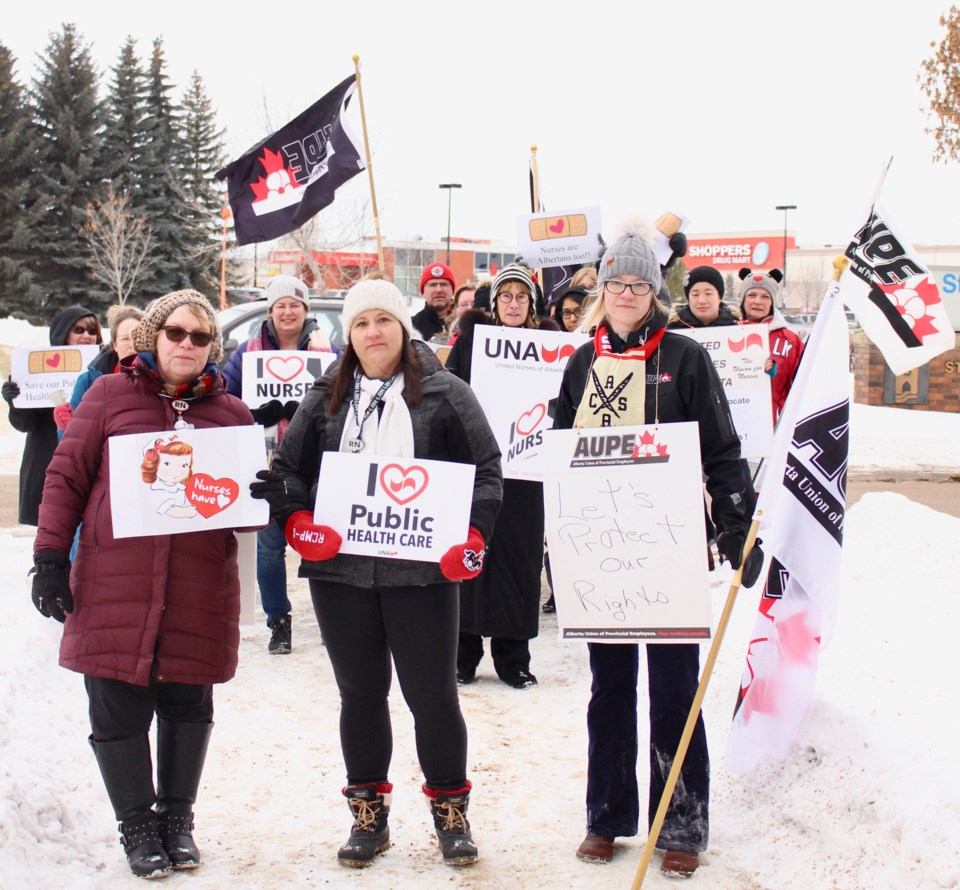As part of what Alberta's finance minister called a “surgical approach to spending reduction,” the provincial government plans to bolster capacity in Alberta's rural hospitals while providing more surgeries in independent and private clinics to reduce surgical wait times without increasing health spending.
“We won't get there by just staying with the status quo,” said Alberta Minister of Finance Travis Toews, speaking to media on Thursday. “We absolutely have to look at making some fundamental changes.”
In budget documents tabled Thursday, the Government of Alberta has committed to maintaining planned operational spending for health through 2023, spending $21.6 billion dollars in 2021. That represents a $5 million increase over what was budgeted for 2019-2020 but $212 million less than what is forecast to actually have been spent that year.
RELATED: Alberta finance minister says 2020 could be turning point for economy
“We are maintaining health care funding in this province, but more than that, we are looking to improve the way health care is delivered,” Toews said.
Health spending makes up about 40 per cent of the province's total expense budget.
The provincial government hopes to squeeze more value out of Alberta's health budget after reports suggested Albertans are paying more than comparable provinces while getting less.
Last year's Blue Ribbon Panel on Alberta's Finances found, according to a report released in August, that Alberta was spending $5,077 per capita on health while British Columbia, Quebec and Ontario spent an average of $4,239, “and we're not getting better results,” Toews said.
“We can no longer afford to be an outlier in the terms of how we spend money,” Toews said.
A review of Alberta's health care system conducted by Ernst & Young, released Feb. 3, identified a number of long-term savings initiatives that can potentially save between $1.5 and 1.9 billion annually.
Alberta Health Services is expected to present a long-term implementation plan on how they can apply the report's recommendations to meet these goals to the provincial minister of health on May 13.
“For every efficiency and for every cost saving achieved, those dollars stay in our health care system. Those funds will go to front-line health care delivery in this province,” Toews said.
According to Alberta Health Services, there are approximately 70,000 Albertans waiting for surgery, half waiting longer than clinically recommended targets.
To help address this, the provincial government has earmarked $100 million over three years for the Alberta Surgical Initiative in Budget 2020, hoping to reduce wait times for surgery by funding an additional 80,000 surgeries by 2022-23.
RELATED: Alberta's post-secondary budget cut six per cent
Alberta Surgical Initiative funds will be used to open new operating rooms, renovate existing spaces and purchase new medical equipment.
As many as 18,000 more surgeries could be performed in Alberta every year if operating rooms were utilized more effectively, according to the Ernst & Young review. The report estimates Alberta's operating rooms currently operate at about 70 per cent of their total capacity.
Additional surgeries could be performed by expanding the use of publicly funded independent operating facilities outside of hospitals.
Around 40,300 publicly-funded surgeries in Alberta were performed in independent and private operating rooms in 2018-2019, representing about 15 per cent of all publicly-funded surgeries performed in Alberta that year.
The government's plan would see the number of publicly funded surgeries in non-hospital settings increase to 30 per cent by 2023, with the Ernst & Young report estimating such surgeries can cost between 15 and 33 per cent less than when they are conducted in hospitals.
Toews said by following a similar plan in Saskatchewan, “they drastically reduced their wait times and they actually performed those surgeries for about 26 per cent less cost than the general system.”
As part of building overall system capacity, Budget 2020 also earmarks $35 million over three years for a new Rural Health Facilities Revitalization program, which is designed to upgrade medical infrastructure in rural Alberta.
The budget also includes $25 million over three years for the Red Deer Regional Hospital Renewal Project and $137 million by 2030 for Calgary's Peter Lougheed Centre emergency department, mental health intensive care unit and laboratory redevelopment projects.
The provincial government plans to make up the cost of these initiatives through finding efficiencies in the health system. This includes a plan to reduce spending on public sector staffing costs by 7.7 per cent – said to be made mostly by attrition and closing already vacant positions – as well as renegotiating physician fees, outlined as one of the three largest operational health expenses in Alberta.



